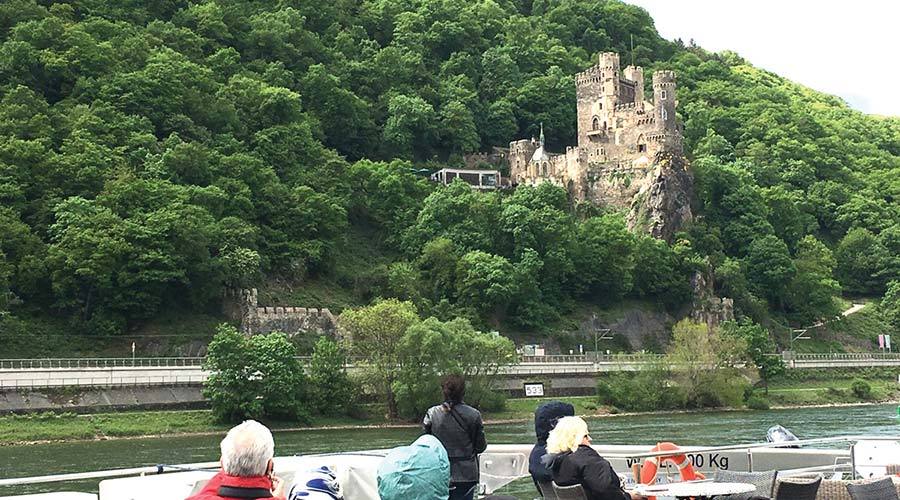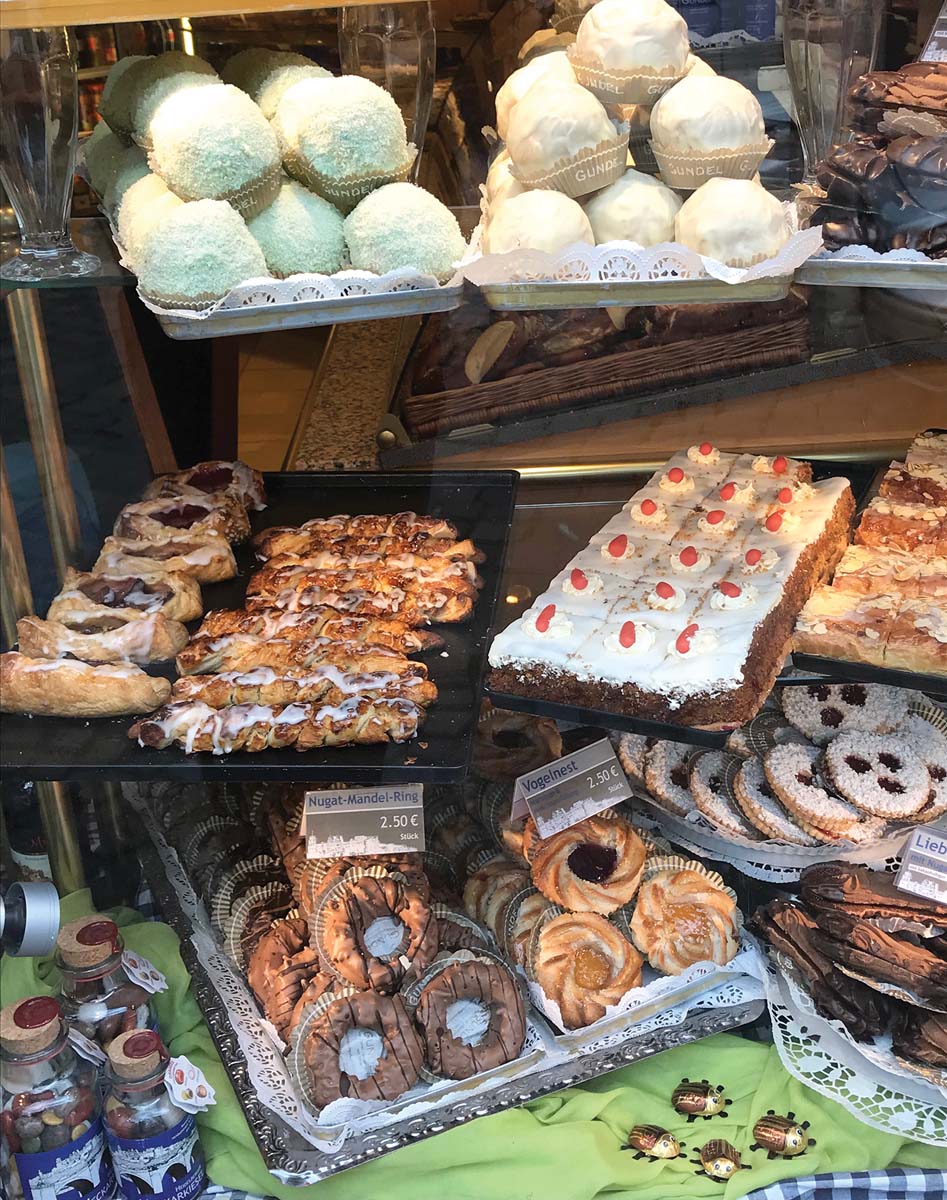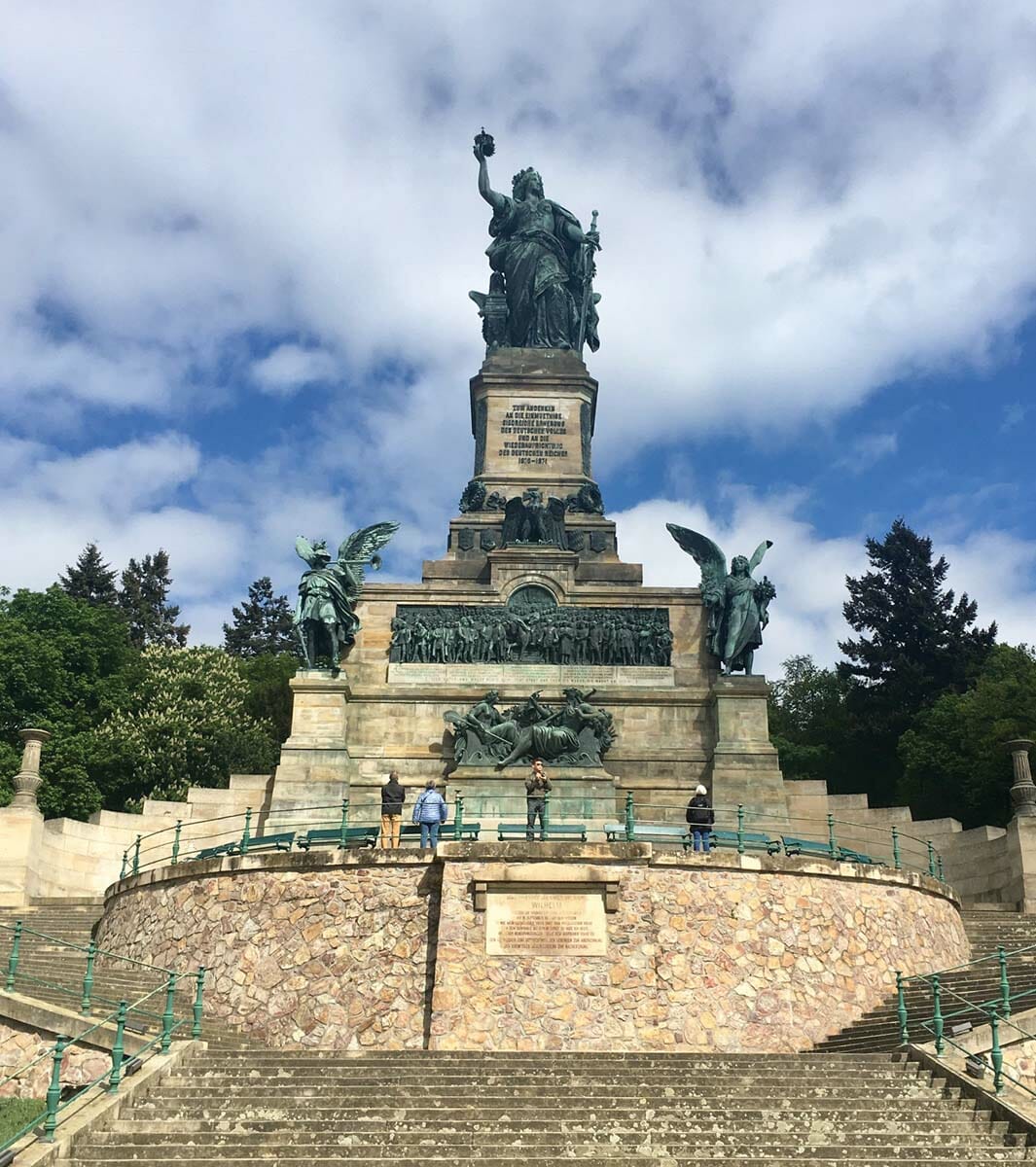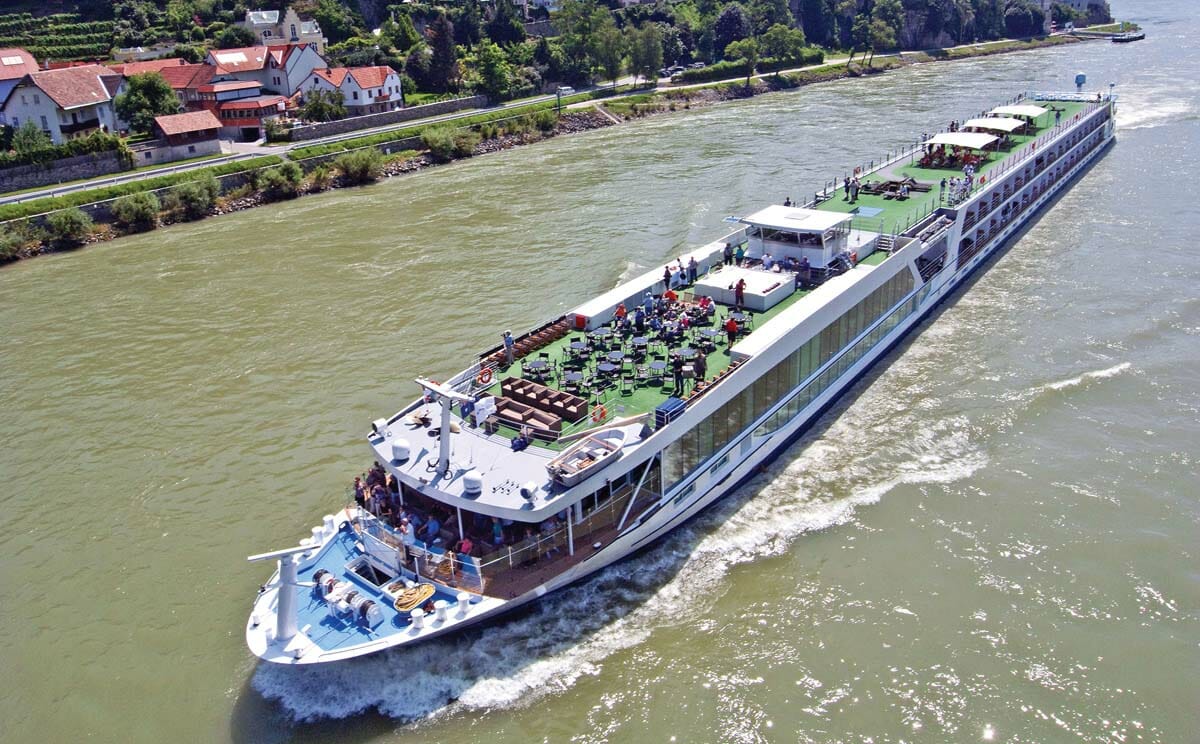
By June Naylor
As easy as it is indulgent, cruising on the Rhine keeps the scenery close and the crowds at bay.
Exploring the heart of Heidelberg on a bright afternoon, my husband and I walk across the famous Old Bridge, with its dramatic view of castle ruins, to poke around in boutiques selling chocolates and beautiful bottles of hazelnut and pear liqueurs.
Ready to rest, we are grateful for the ranks of taverns in the college town (home to Germany’s oldest university) and choose one with outdoor tables ideally situated for people watching on the Marktplatz. We sip giant steins of dark beer and split a comically large pretzel while marveling at the Church of the Holy Ghost, a hulking Gothic wonder dating from the 14th century. Chatting locals walk past with their dogs, making us wish we understood German, when we suddenly tune in to the family speaking English at the next table. One of the four from Peoria, Illinois, turns out to have a job in Muleshoe, Texas. But rather than talk about home, we visit about the wonders of sailing through Europe on a river.
The romantic notion of floating through the continent had long intrigued me. Eager to gaze at fairytale castles, hopping off to sip wine and eat pastries in tiny storybook villages, we chose a Rhine River cruise. The Ruby, a luxury ship from the Australian line called Scenic, delivered on its promise of no crowds at meals or on-shore excursions. We sailed in the company of about 150 other people housed in just two decks of cabins. Best of all, we enjoyed plenty of personal attention from our butler — every cabin comes with this service — and felt special when a favorite waiter remembered things like which tea I preferred at breakfast. Morning till night, we reveled in a balance of independence and pampering.
We begin our journey with a few days on our own in Paris, after which we sail from the Swiss city of Basel, meeting fellow passengers in the bar before dinner. Each guest has the chance to dine in the smaller, private Italian restaurant one night; otherwise, it’s open seating in an attractive dining room with views of passing scenery. Cuisine tends toward nouvelle presentations of classic dishes — fancy works of steak, veal, pheasant, pork and numerous kinds of fish with beautiful side dishes. Each lunch and dinner brings an impressive selection of wines, most from Germany and France.
There’s no casino or theater; after-dinner entertainment ranges from live classical music performances to dancing.
Sailing usually happens at night, but one lazy afternoon we move slowly through the Rhine Gorge. Sipping champagne on the sunny deck, we gawk at one hillside castle after another, some 40 or so in a three-hour stretch. Those wanting narration about the warring families, who often built their fortresses right next to each other, tune in to GPS-enabled handheld devices with earpieces.
Downtime onboard is good for grabbing a catnap on cushy feather beds in the well-appointed cabins and taking tea on our private balcony (one of the butler services), where we read about upcoming points of interest. In the late afternoons, our cruise director — part professor and part Rick Steves-level expert — delivers an entertaining talk on the history, diversions and trivia related to the next destination.
Each day in a new location offers options for adventuring off the boat. Wander around on your own or join a small group (usually no more than 15 people) for a guided walking tour. You can even check out the villages from one of the ship’s compact electric bikes, which are particularly handy on hills.
Among memorable stops, there is the Cathedral de Notre-Dame, an exquisite Gothic church in the Alsatian city of Strasbourg, followed by a tasting of the region’s wines in the hilly medieval village of Mittelbergheim and an opera performance at a baroque palace.
All of which brings us to Heidelberg. After our tour of the Altstadt, or “Old Town,”and its castle and ruins from 1300, we sail on to Rüdesheim to shop for local wine, wander through museums and ride a cable car to a formidable mountaintop monument called Niederwald, built to commemorate German nationalism in the 1870s.
In Koblenz, a tasting at a small family-owned winery leads to a lunch of bratwurst and soup on a lively plaza in the old town, then a walk along the Rhine to its confluence with the Moselle River.
In Cologne, we buy sweets from a petite chocolate studio and wander the famous cathedral with thousands of other tourists, the biggest crowds we encounter until our arrival in Amsterdam at trip’s end. There, we ogle the wares of endless cheese shops, tour the canals on a sightseeing boat, admire portraits of Dutch society in the Hermitage Amsterdam and, not to be missed, visit the Van Gogh Museum.
Saying farewell to the Ruby, we spend another day on our own exploring Amsterdam and enjoy an exotic dinner at the canalside Indonesian Café Kadijk. Over spicy beef stew, we tune in to the unfamiliar languages around us. We know we’ll hear accents from Muleshoe again soon enough, with Europe’s rivers murmuring far behind.
THE DETAILS
Scenic river cruises The line sails throughout Europe, as well as Southeast Asia. Rhine River trips last eight to 21 days, starting at $3,510 per person, including all meals, drinks, tours and gratuities. Some packages include airfare. Scenic also offers ocean cruises in several parts of the world. For details, call 857-256-5480 or visit scenicusa.com.
Your shipmates Expect mostly active adults, typically 40s to 60s, from throughout the U.S., Canada, the U.K. and Australia.
What to pack Great walking shoes for the cobblestone streets, layered clothing for the ever-changing temperatures, daypacks and refillable water bottles for exploring, and electrical outlet adapters. Jeans are OK for daytime, khakis and jackets for men in the evening.



